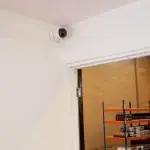Night Vision Security Cameras – Tips & Benefits
Night Vision Security Cameras – Tips & Benefits
Although apparently, having night vision cameras mean that the cameras should have the feature to capture images and footage at the time of night when it is dark, but still practically, even at the time of night, different sources of light can be used to make the environment a bit lit instead of completely bleak. For example, bulbs could be lightened up near the camera to allow the camera to capture footage with appropriate lighting. At certain situations, even the moon and the stars come handy and allow the camera to capture visible footage
Although having low light cameras does not exactly mean that you do not need any light at all in order to capture footage at night, but still these night vision security cameras can be of great help in order to ensure the security and safety of a house or business place. A great deal of information and evidence can also be ensured through these surveillance systems.
If you only intend to have your premises to be monitored only at day time, or only at an environment that is completely bright and lit, then you can obviously choose to have normal high quality surveillance cameras installed at your place. But if the monitoring of the premises needs to be done at night or at a place which is not very bright and lit, then having low light cameras installed at the place should be a good option.
Ironically, according to facts and figures, as far as home security surveillance systems are concerned, most of the occasions on which the footage might be necessary, occur at the time of night because usually thieves and robbers use darkness as their cover for performing illegal activities.
When installing low light night vision cameras, you need to make sure that the Infrared feature is powerful enough to capture a footage properly. Different vendors and manufacturers of such cameras claim to have perfect IR, and they try to prove the power of the IR of the camera by mentioning the maximum range of the camera. Usually the maximum range of a camera can vary from 5m to 50m or even more. The point you need to consider here is, at maximum range, the camera will be able to capture the footage, but the quality of the footage at maximum range shall be ideal enough for facial recognition.
The trick is to have the security cameras installed at your place that have the maximum range of more than the range you wish to be monitored. For example, if you need to monitor an object or person that is at a distance of 20m from the point at which the camera shall be installed, then you should get a camera that has a maximum range of 30m or more.
Let’s make things more confusing. Purchasing night vision security cameras that have too strong IR is also not a good decision. Not many people are aware of this fact, but if the IR of a security camera is too powerful, more than the requirement, even then the quality of the video footage can be compromised and affected. The thing is, such cameras usually do not have the feature to adjust the brightness of the Infrared. So this means, if the camera has a very good maximum range, with a very powerful Infrared feature, a person standing very near to the camera will not be perfectly visible in the footage. His image might be excessively bright and might look washed out.
Usually night vision low light cameras have the built-in feature to brighten the centre of the image or video footage more, so that the focus remains in the centre. This has a drawback though, that area of the footage besides the centre is not of very high quality in night vision. This can sometimes be a problem when you use the lenses of the camera to zoom out. In this case, you need to remember that the corners of the footage might not be as bright and illuminated as the centre of the footage.
Moreover, you should also remember to make sure that nothing unwanted obstructs the view of the camera. For example, a tree branch or something similar. If any such object is very near to the camera, it might affect the night vision and the camera might automatically try to brighten up the tree branch or the other obstructing object because obviously the camera does not know it does not need to focus on such objects, and on the other hand, the other view of the footage remains a bit dark.



